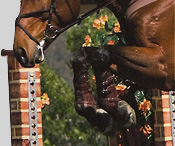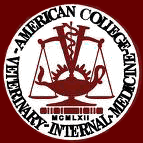



SAND COLIC

In our area, sand colic is a common problem. How serious is it? What are the signs? How is it treated? How can you prevent it? Let's look at these questions.
How Serious? Sand colic is always serious, and has a relatively high fatality rate among the common causes of colic. Thirty to forty percent of horses requiring surgery for sand colic do not survive. Why is it so deadly? Consider the qualities of sand. It occurs in very fine particles that are readily picked up by indiscrimant horses when eating from the ground. Sand is abrasive – after all, there's a reason it is used for "sand-blasting" – and destroys the delicate lining of the colon as it is churned back and forth by intestinal motility. Sand is heavy – it settles to the bottom of the large colon, dragging the colon downward, exerting painful tension on the colon wall and acting as a pendulum, predisposing the colon to swing into abnormal positions. Both the abrasive damage and the physical presence of the sand decrease colonic absorption of nutrients and interfere with the normal passage of food material through the gastrointestinal system.
Clinical signs: There are several clinical syndromes associated with sand accumulation in the colon. Some horses will have intermittent diarrhea and weight loss, without obvious signs of colic. More commonly, horses show recurrent signs of mild to moderate abdominal pain, often accompanied by diarrhea and poor appetite. Horses will stretch out as if unable to urinate, spend long periods of time lying down, occasionally paw at the ground, and in more severe cases, roll. They often respond initially to medical treatment for colic, but signs usually recur within 12 to 24 hours of initial treatment.
Diagnosis: Sand colic is most easily diagnosed by a combination of clinical signs, listening to the abdomen for the typical rushing sound of sand, and detecting sand in the horse's manure. Unfortunately, the sounds of sand and the presence of visible sand in feces are often absent in horses with sand colic. In a hospital setting, abdominal ultrasound and/or abdominal radiographs can be helpful in making a diagnosis.
Treatment: As long as the degree of pain and the changes in the horse's systemic condition are mild, sand colic is treated medically. Repeated administration of a mixture of water, psyllium and mineral oil delivered by a naso-gastric tube can help mobilize sand from the floor of the colon. Maintaining hydration is very important to encourage sand to mix and move through the colon. This can be achieved by administering water through an indwelling naso-gastric tube or by giving intravenous fluids.
You may be thinking – wow - When my horse had sand colic, he recovered after a dose of banamine and one tubing! This may be the case, but in these horses the ongoing concern is how much sand is still present in the colon, and when will it become a problem in the future?
On the other hand, horses with severe abdominal pain, or those non-responsive to medical therapy with deteriorating systemic signs, must undergo surgical intervention to remove sand from the colon. The weight of the sand, the damage it causes to the colon lining, and the time that usually passes between initial diagnosis and surgical intervention, all make sand colic surgery one with a relatively high mortality and complication rate.
Prevention: So, how do we prevent sand colic? The two most important factors in preventing this disease are 1) building a safe feeding environment and 2) having good quality forage available. The average #1000 horse should be fed 15 pounds daily of good quality hay. Feed inside on rubber stall mats, or if feeding outside, I recommend large tractor tire feeders with plywood bottoms bolted down to black rubber mats to make a 4' perimeter that can be swept before each feeding. Place feeders in corners if possible and construct a low wind break to reduce blowing of hay. Building or buying such feeders will cost some money – it is cheap insurance when weighed against the cost – financial and emotional, of dealing with serious sand colic.
While it may have some beneficial effect, feeding psyllium is not the magic bullet we all hope for. Recent research indicates that psyllium does in fact have a measurable effect on the sand load in a horse's colon. However, most studies have shown no significant benefit, and the biggest question here is – will your horses eat enough psyllium to make a difference? I strongly urge you to experiment with products containing 99+% psyllium husk to find the one most palatible to your horse, and then FEED 12 OZ DAILY THE FIRST 5 DAYS OF EVERY MONTH.
To those of you who have lost horses to sand colic, remember that this problem is part of life in Nevada. Some horses will consume dangerous amounts of sand even in the face of the most careful preventive measures. Do your best, and rest easy knowing you have minimized your horse's risk.
PO BOX 60730
RENO NV 89506
EMERGENCY (775) 742-2823 OFFICE (775) 969-3495
FAX (775) 969-3923





